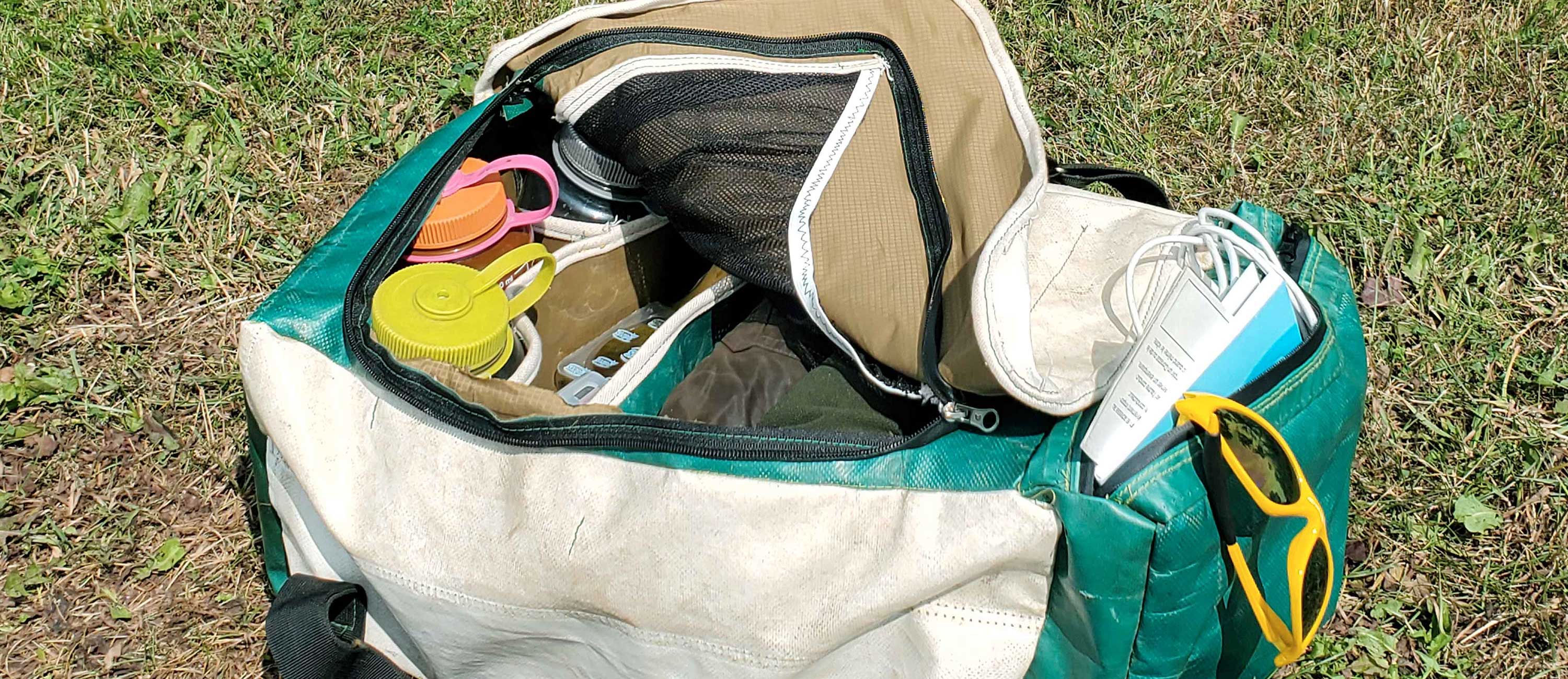

The DayPak is a bag designed for use by treeplanters to carry their personal belongings to the block every day. It has plenty of space to fit everything that a planter might want to pack for the day, with collapsible compartments to easily organize its contents. It is made out of rubberized canvas that is reclaimed from old planting bags, making it rugged enough to be thrown around in the back of a truck day in and day out.
Most importantly, it is able to transition from backpack to duffle bag with four simple clips. This gives it the ease of access of a duffle bag, paired with the transportability of a backpack. This feature is important for treepanters, who often have to carry all of their gear for the day into the woods for up to a kilometer.
Research the bags that treeplanters currently use to carry their belongings to and from work. Based on the results of this research, design a bag that fulfills these requirements. Mine will be a modular design that will be able to smoothly transition between duffle and backpack.The reasoning behind this is that while a duffle provides far superior ease of access to the contents of the bag, it can be difficult to carry for long periods of time or through challenging terrain where the use of both hands might be necessary. Conversely, a backpack is great for carrying gear, but it can be frustrating when the user needs to get at an item that is buried at the bottom of the bag.
The first step that I took was to observe the bags that were used by my colleagues at the treeplanting camp where I was working for the summer. I asked these same people which features were most important to them for an “ideal” bag. These were mostly for it to be waterproof, versatile, and have large compartments. Based on this research, I decided to make the bag out of rubberised canvas, reclaimed from old planting bags, to have collapsible compartments, and to give the bag the ability to transition between backpack and duffle form.
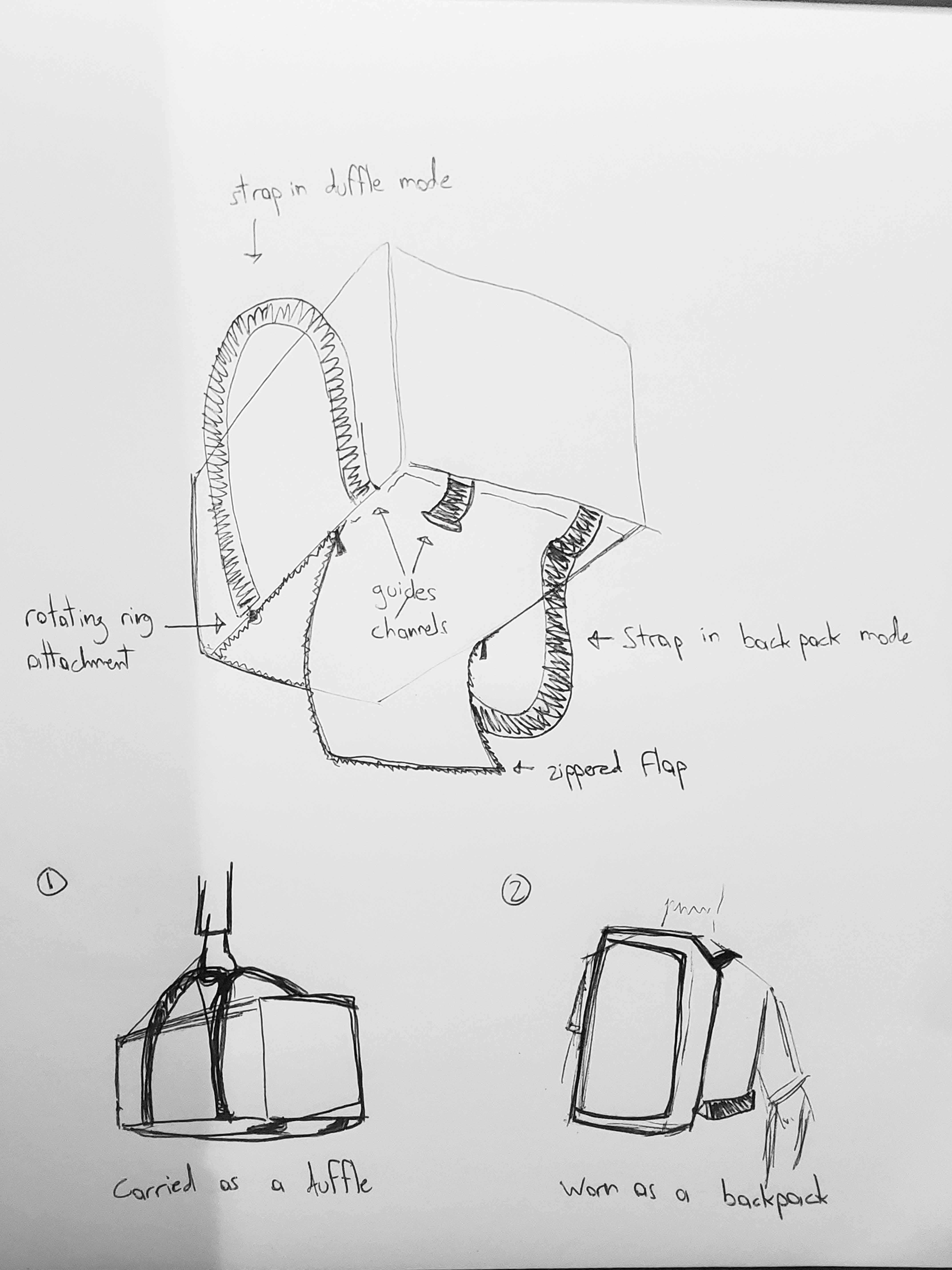
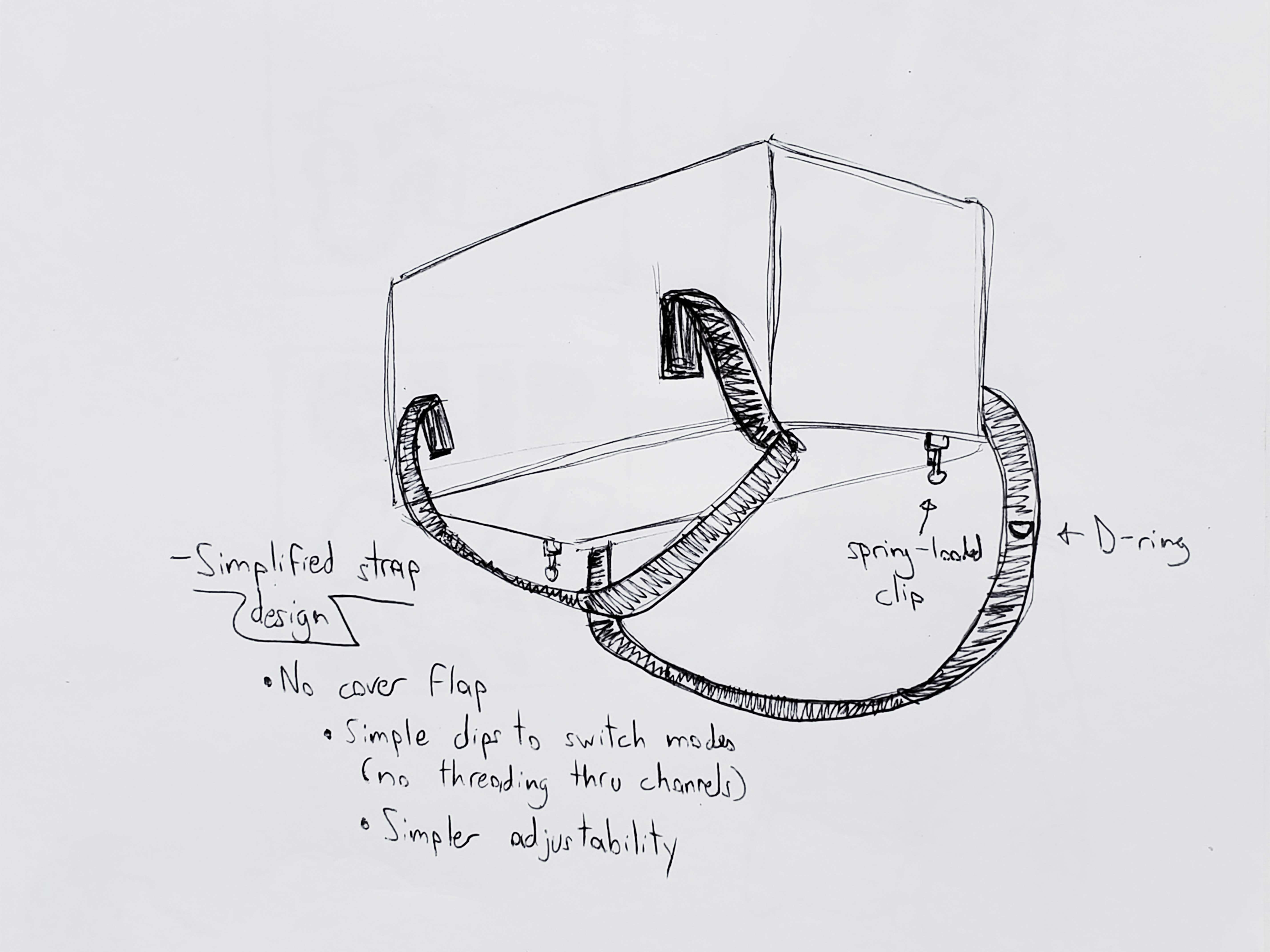
Once I had the rough idea of the form of the bag, I made a paper model to test the form of my design. This included compartments for clothes, food, water bottles, and valuables. After doing this I was able to refine the design and made a full-scale prototype using linen. This showed me that the design for the straps was flawed, but that the general compartment design and bag construction were sound.
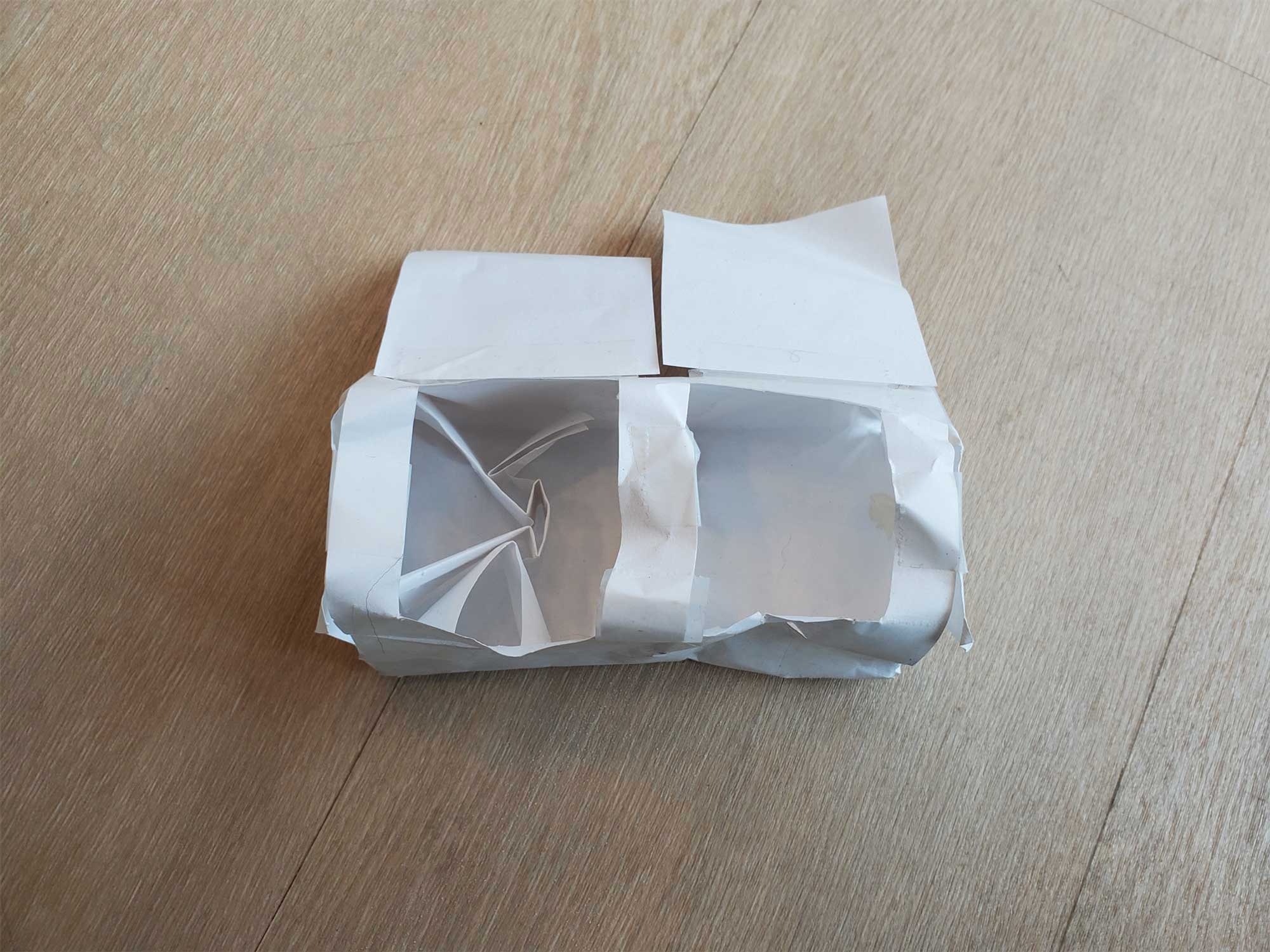

I made the final bag using my domestic sewing machine, working out of my kitchen. Contending with the limitations of the machine was one of the biggest challenges of the whole project, as the thickness of the material meant that I had to use a leather needle.
Another issue stemmed from the fact that I designed the main compartment of the bag to be made out of one large piece of material. Unfortunately, due to my choice to use reclaimed planting bags, I had to assemble many small pieces to get the full panel.
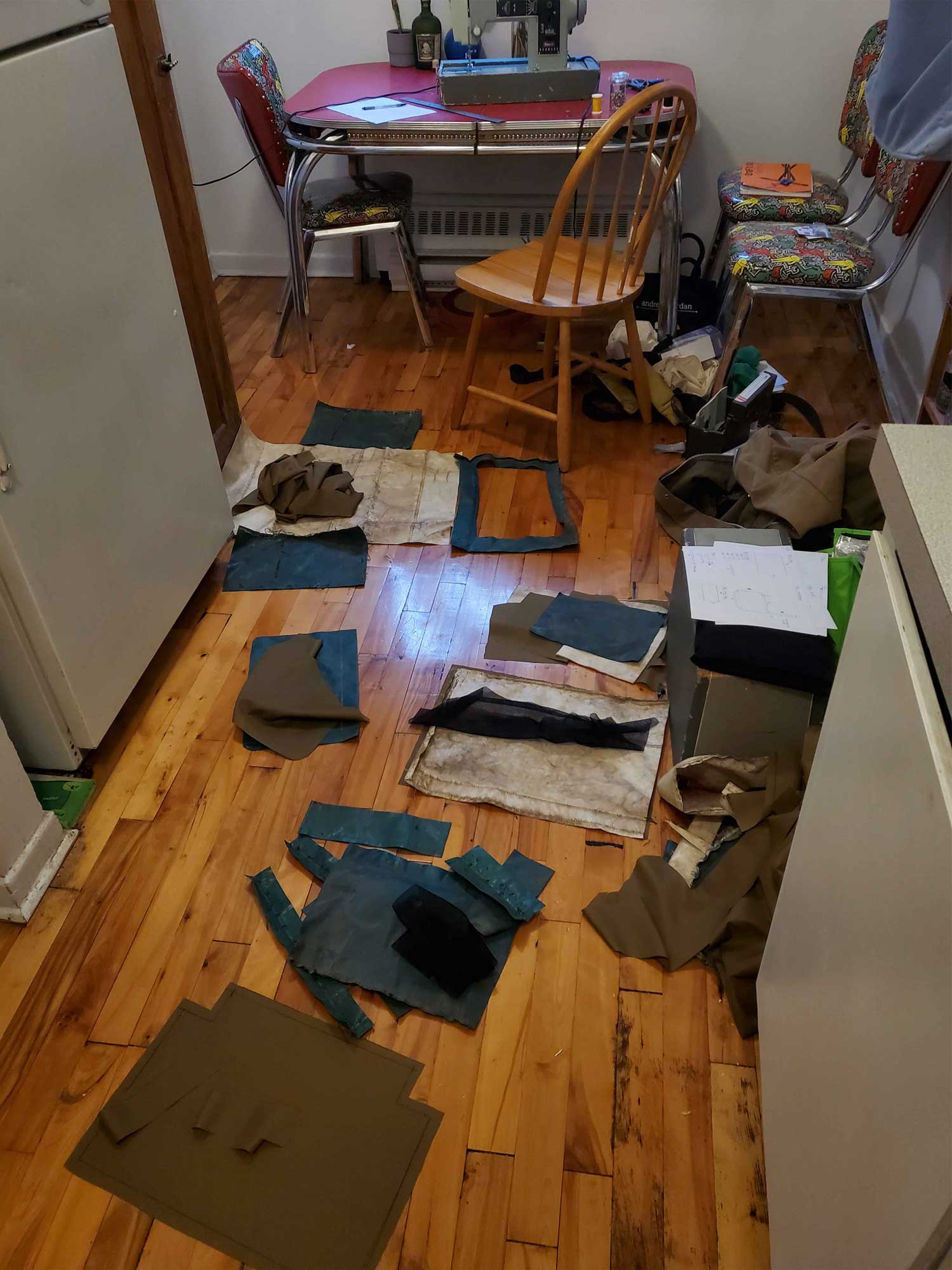
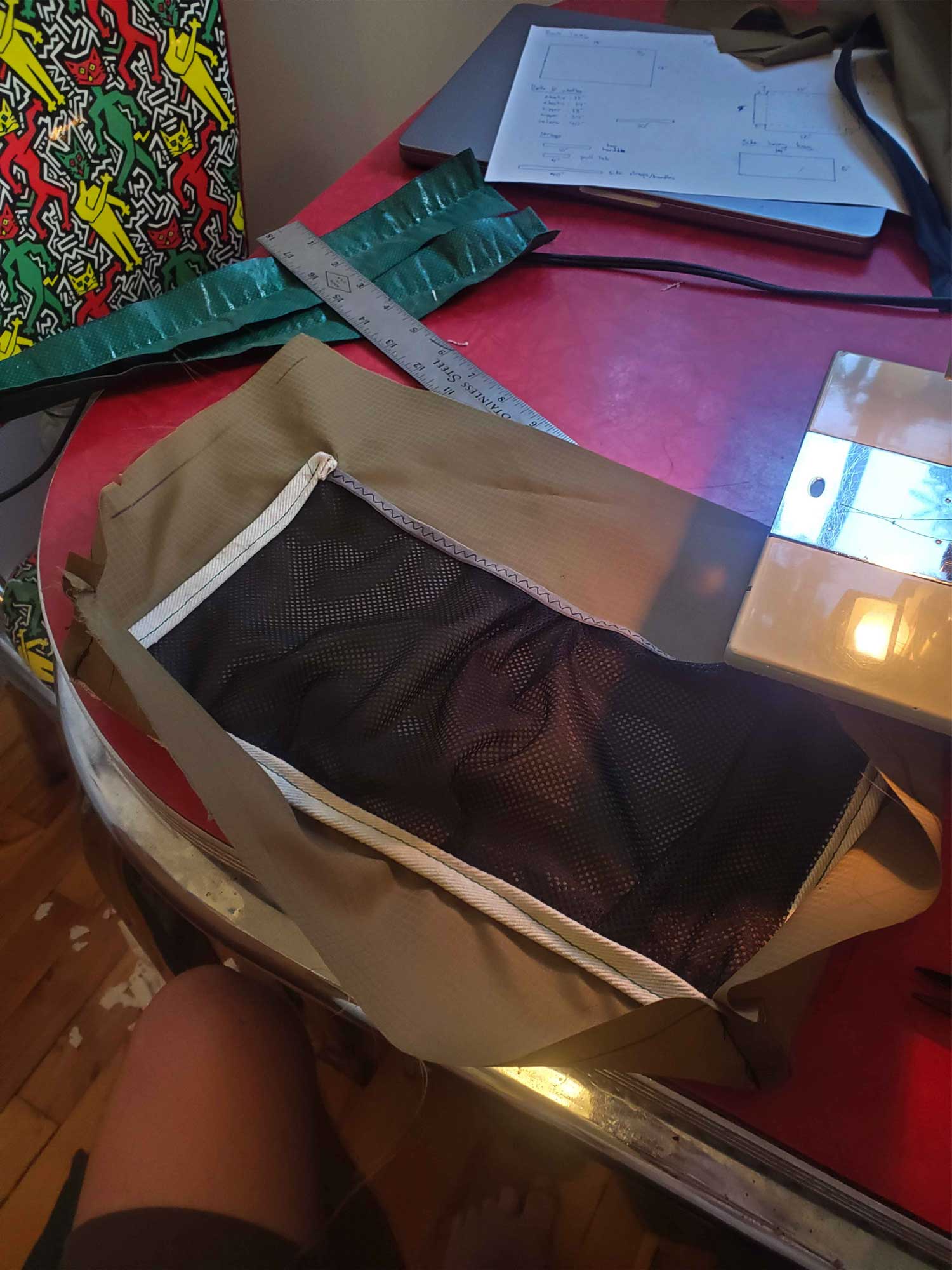
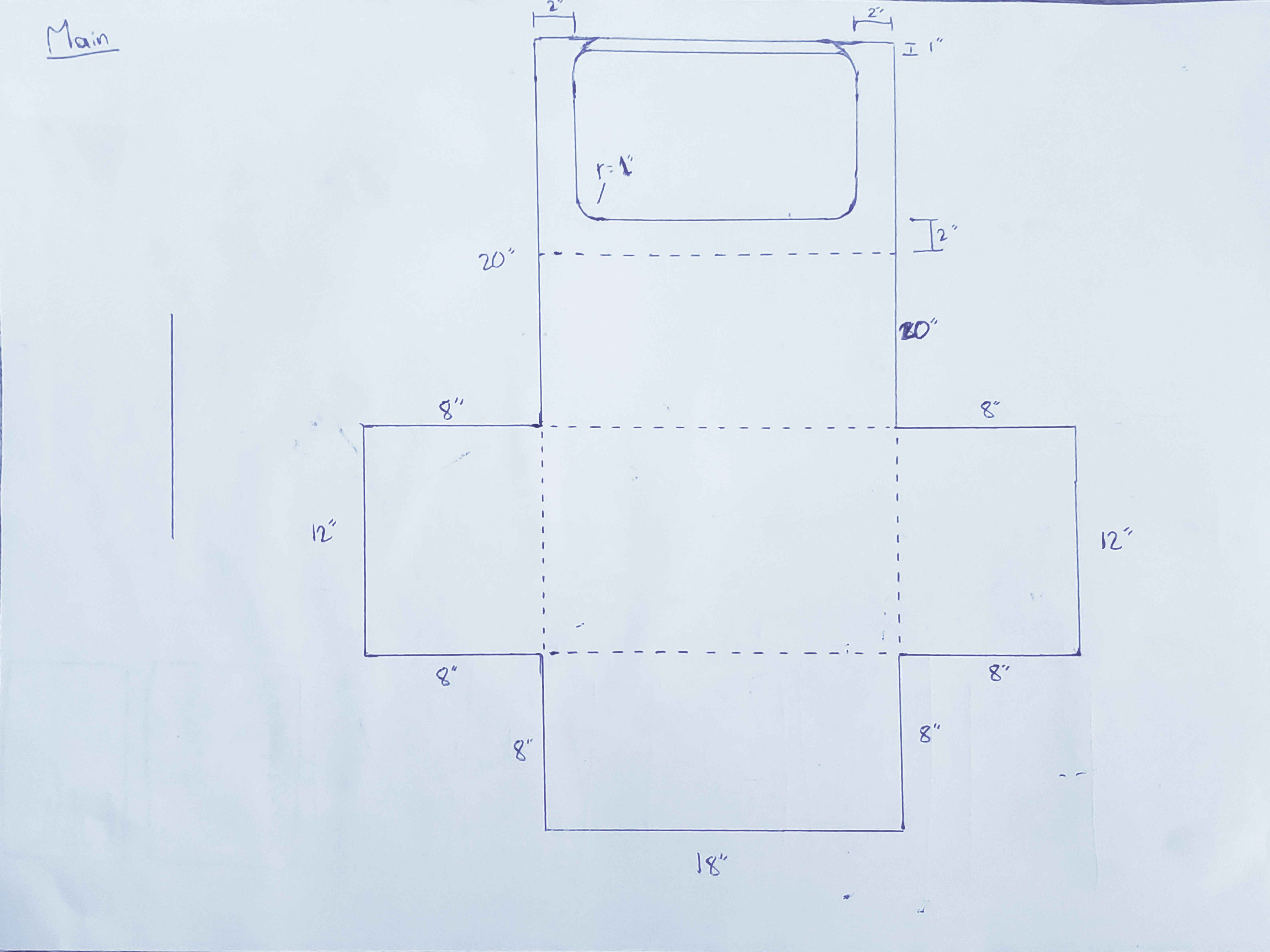
Inside the Daypak, there is a compartment designed to hold three Nalgene water bottles, as this is the most common water bottle brand used by treeplanters. This ensures that planters stay hydrated throughout the day. The bottles also help give structure to the bag for carrying it around.
The DayPak has a fully separate compartment for valuables, making it easy to keep items like a phone, pen and paper, earphones, an epipen, or a wallet safe and secure from the hazards of the job.
Each compartment can easily collapse using snap clips, allowing full customization of the interior space of the bag.
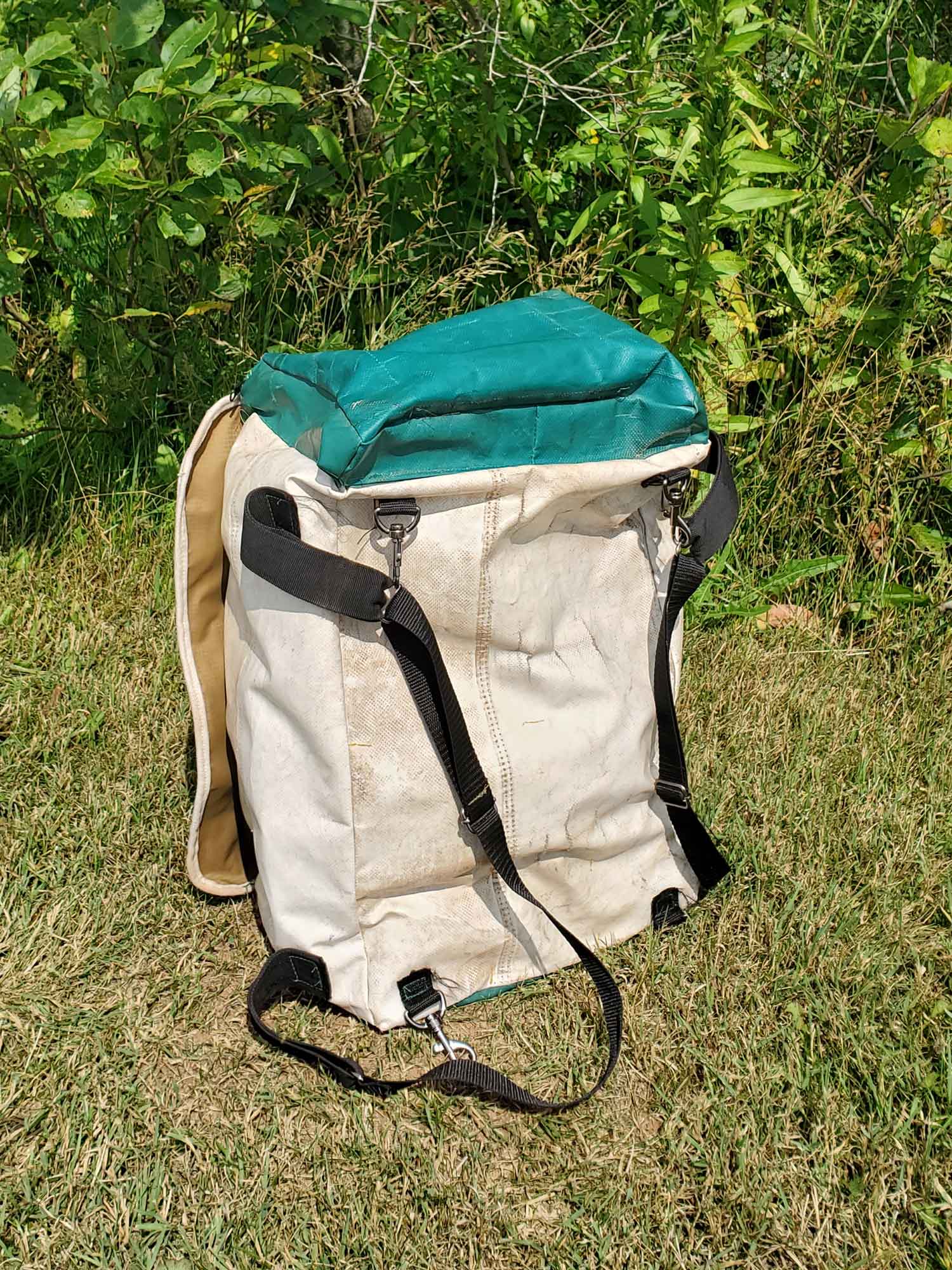
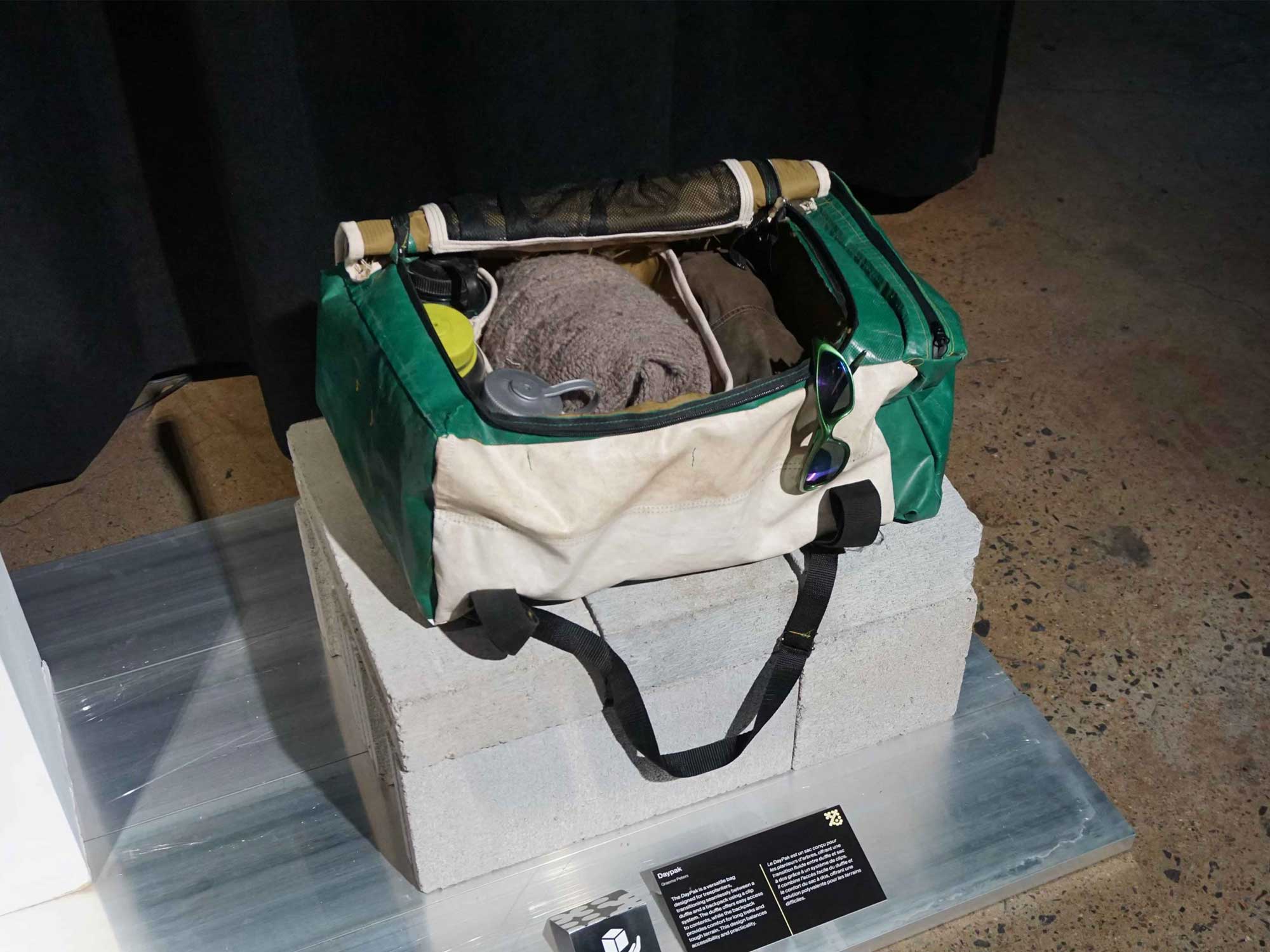
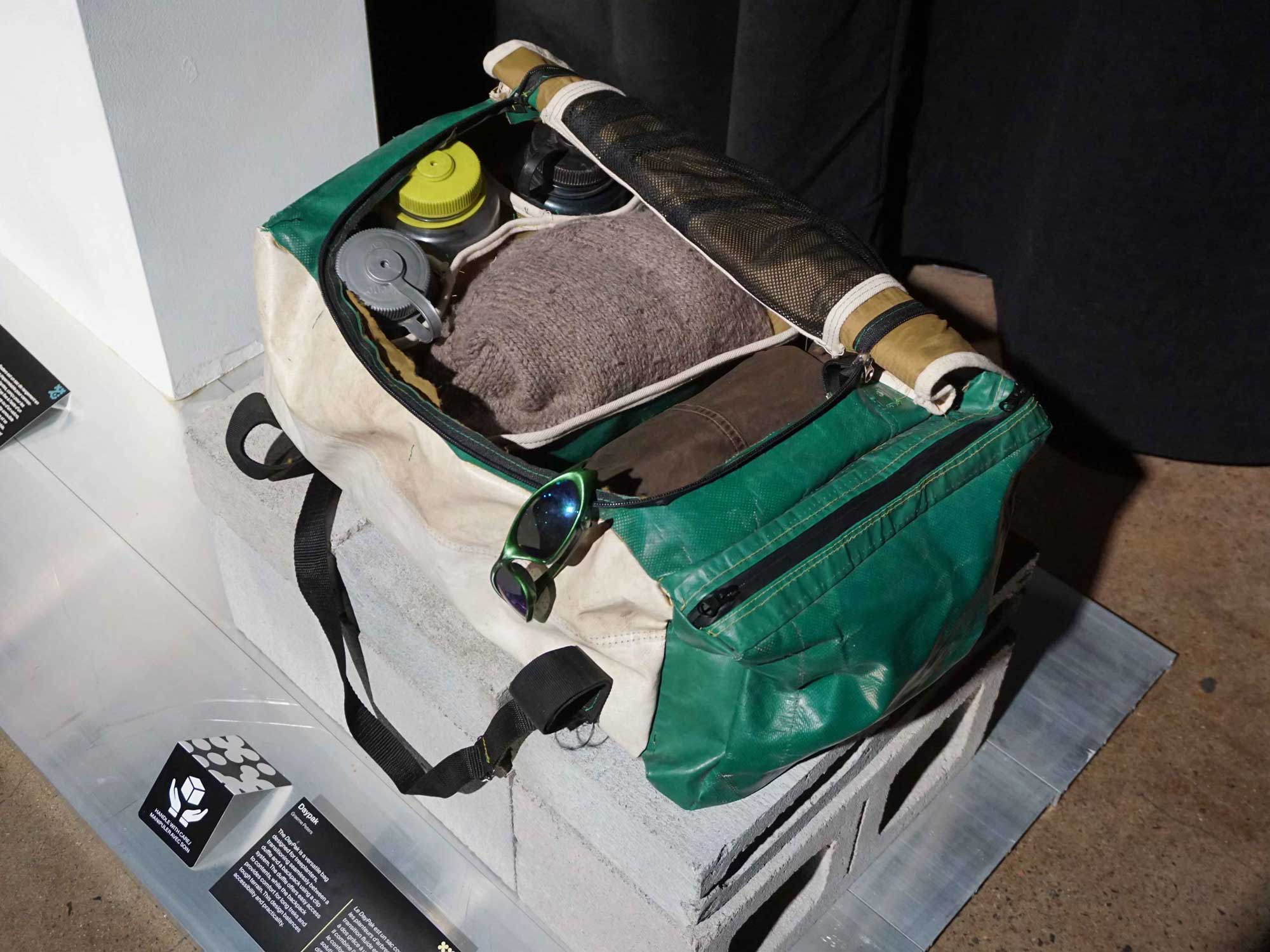
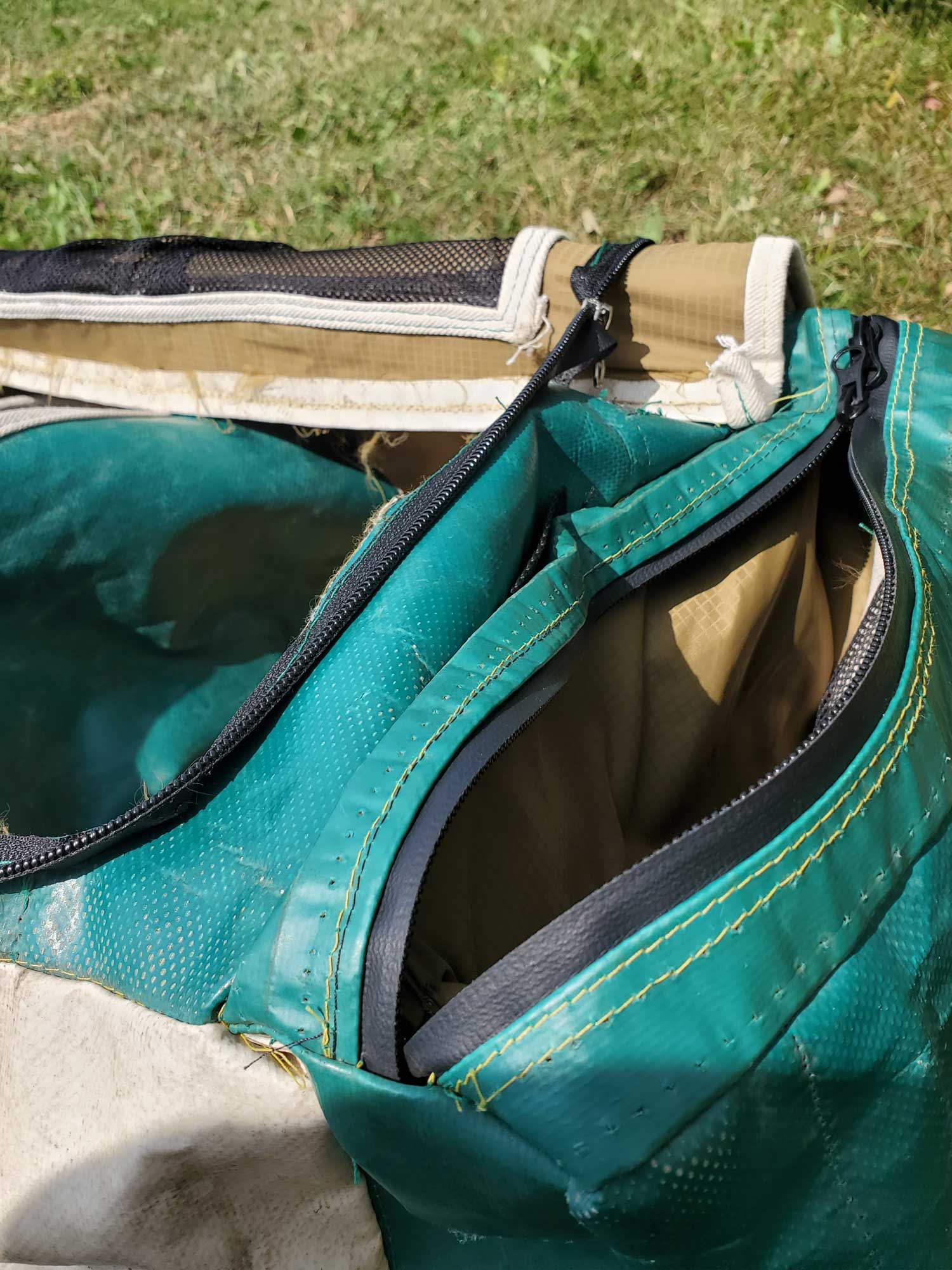
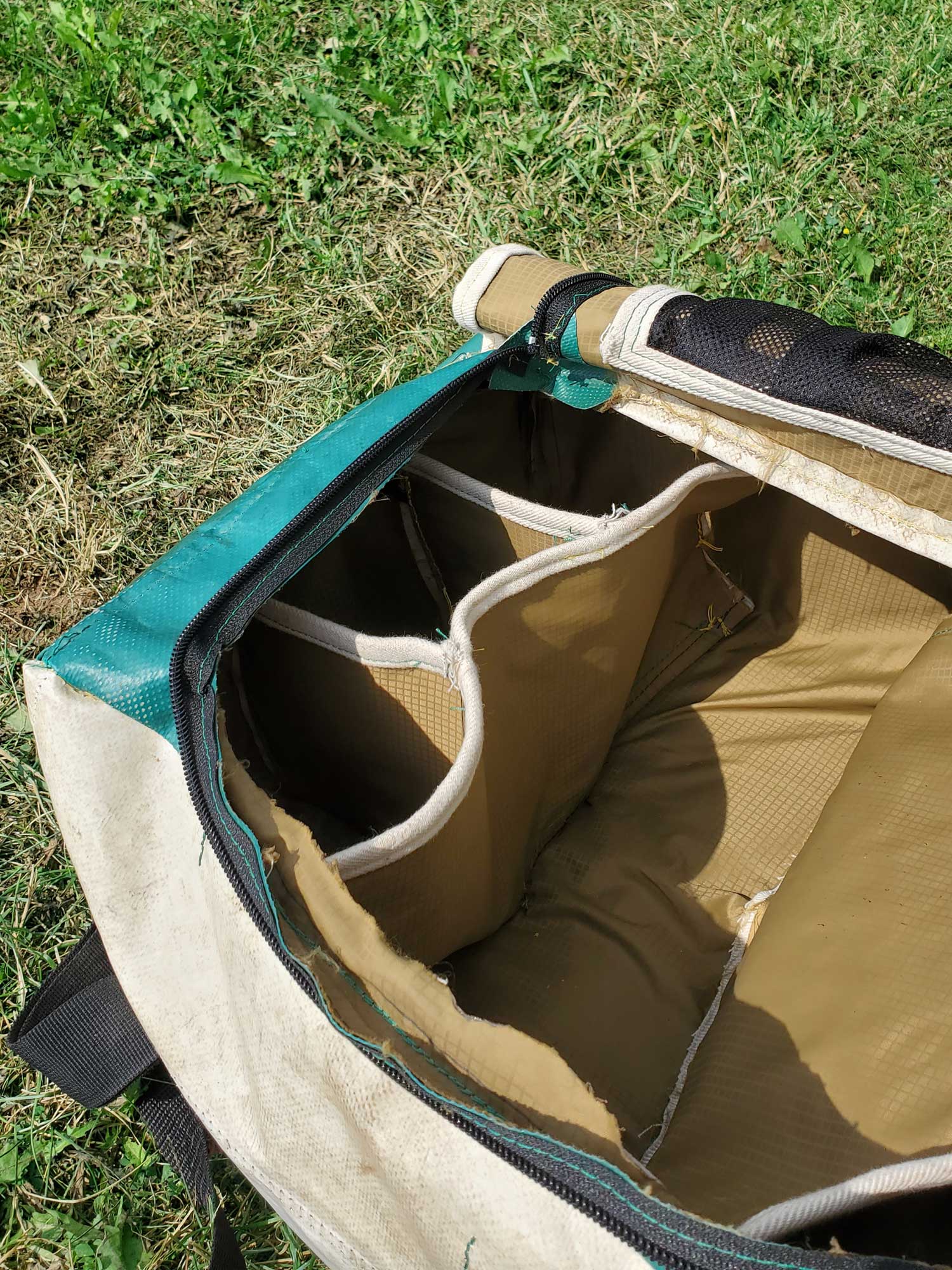
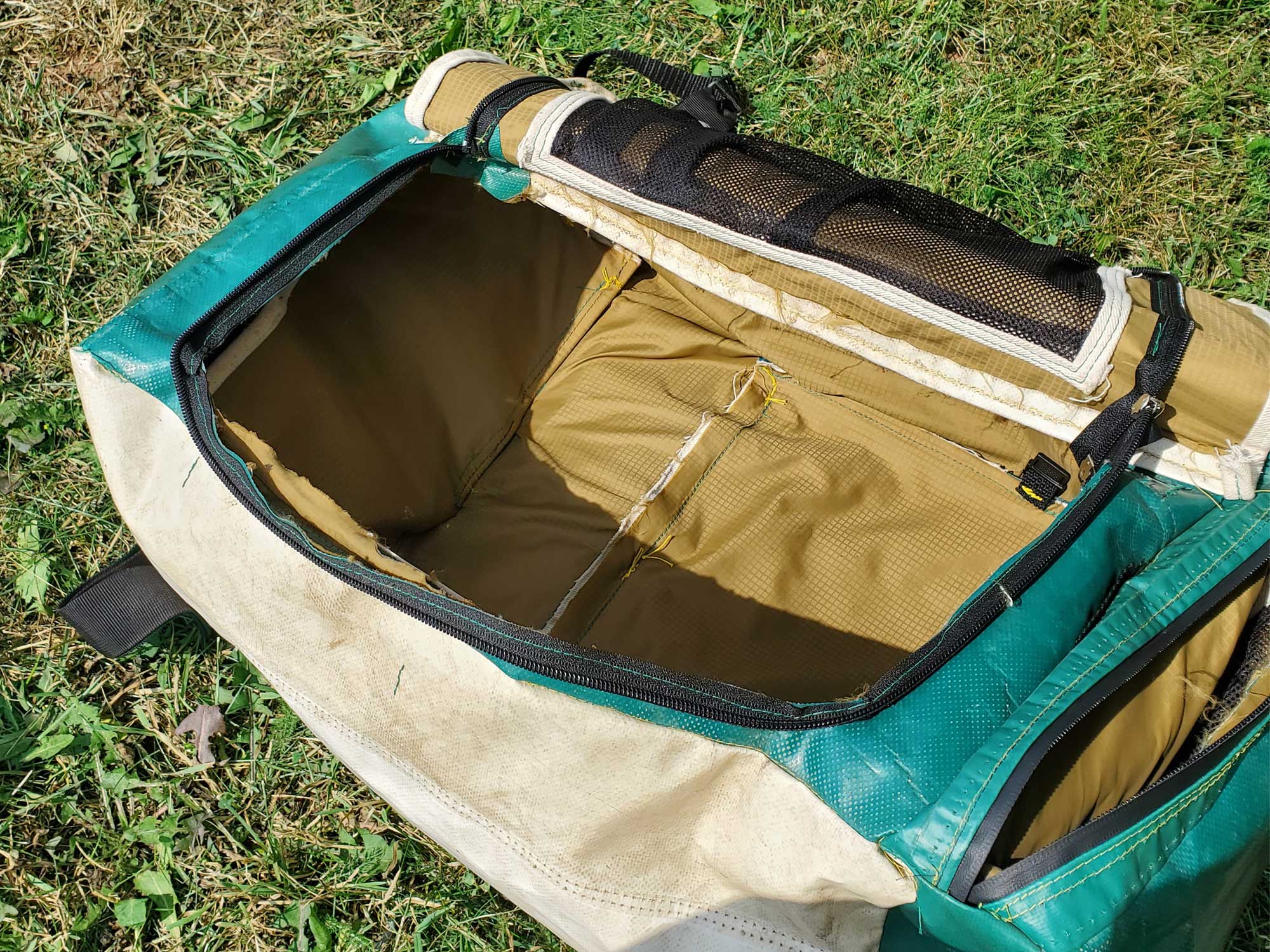
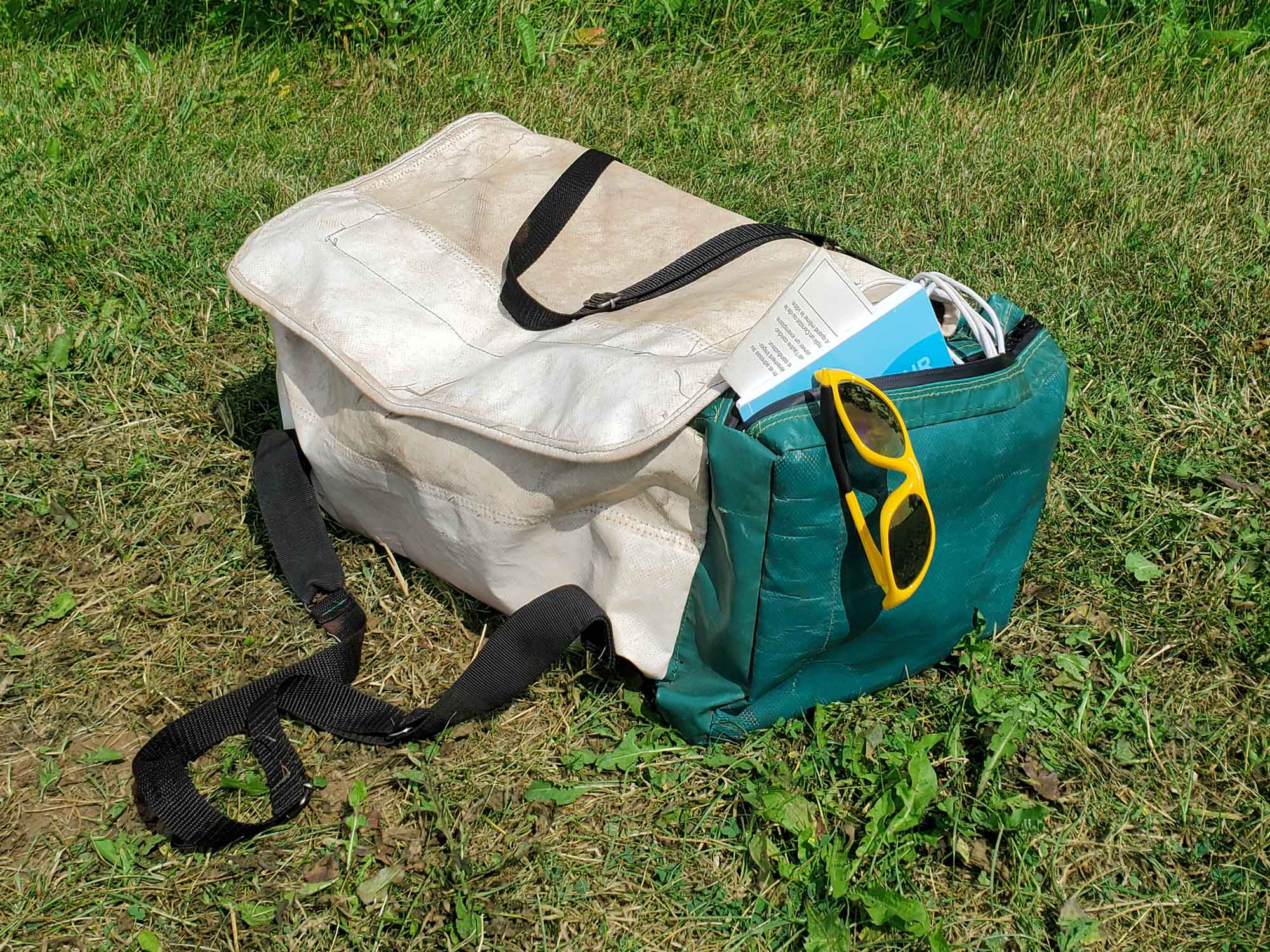
This project was challenging because of the thickness of the materials, requiring the use of a leather needle for final production. Another challenge stemmed from the fact that I designed it to be completely waterproof, using an inner lining layer. I designed the lining to be floating, as I thought that this would make it easier to clean. In effect, it actually just took away from the structure of the canvas and made the bag more difficult to assemble. In a future version, I would make the lining fully attached.